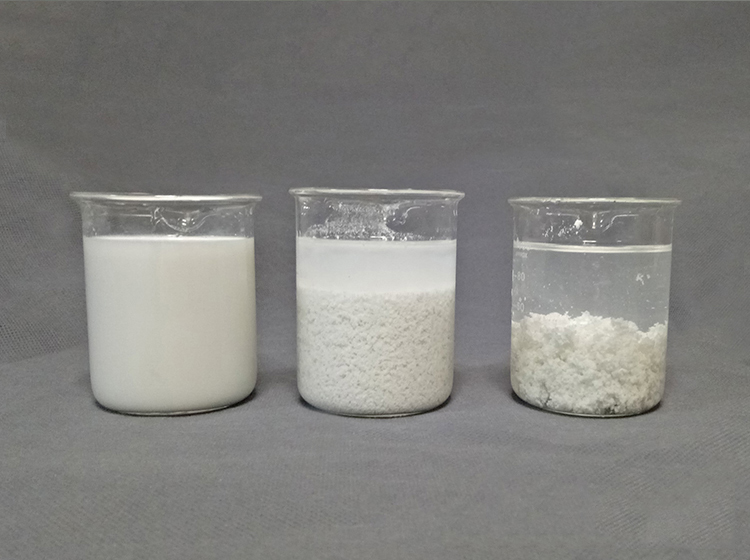What Are the Factors That Affect the Use of Flocculant PAM?
Today we'll discuss the factors affecting the PAM flocculation effect.
Choice of Polyacrylamide Model
1. Cationic polyacrylamide is suitable for the flocculation treatment of sewage with high toxicity and organic matter and the dehydration process of organic sludge.
2. Anionic polyacrylamide is suitable for flocculation of wastewater with large suspended particles, high turbidity and positive charge.
3. Non-ionic polyacrylamide has strong flocculation function in acidic water because it does not have the activity of acyl amino group in the side chain of ionic functional group molecules.

Molecular Weight of Flocculant
The larger the molecular weight of the flocculant, the better the flocculation effect. However, the molecular weight is too large, difficult to dissolve and manufacturing costs are high, you need to choose the most suitable for your own according to the sewage situation, the commonly used molecular weight is 3-18 million.
Dosage of Flocculant Polyacrylamide
The amount is generally different according to the water quality, the amount of less in the sewage can not reach the flocculation effect, the amount of more will appear viscous liquid situation, generally before the use of the machine recommended to do the beaker flocculation experiment prevail. he optimal dosage of flocculant is that all flocculants are adsorbed on the surface of solid particles, and the sedimentation rate of flocs reaches the maximum. The optimal dosage varies with the ionic properties, molecular weight and pH value of the flocculant and can be determined by test method.
The Proportion of PAM Polyacrylamide at Dissolution
The dissolution ratio of APAM and NPAM is 1 ‰, and the optimal dissolution ratio of CPAM is 2 ‰.
PH Value of Water
The pH value of water has a great influence on the use of inorganic flocculant, and the pH value is related to the type of flocculant, dosage and coagulation precipitation effect. H+ and OH- in water participate in the hydrolysis reaction of the flocculant, so the pH value strongly affects the hydrolysis rate of the flocculant, the existence form and properties of the hydrolyzed products. Taking aluminum salts that achieve coagulation by forming Al(OH)3 charged colloid as an example, when pH value <4, Al3+ cannot be hydrolyzed to Al(OH)3 in large quantities, mainly in the form of Al3+ ions, and the coagulation effect is very poor. When pH value is between 6.5 and 7.5, Al3+ can be hydrolyzed into Al(OH)3 neutral colloid with high degree of polymerization, and the coagulation effect is good. After pH >8, Al3+ hydrolyzes to AlO2-, and the coagulation effect becomes very poor again.
The alkalinity of water has a buffering effect on the pH value, and when the alkalinity is not enough, agents such as lime should be added to supplement it. When the pH value of water is high, it is necessary to add acid to adjust the pH value to neutral. In contrast, polymer flocculants are less affected by pH.
Water Temperature
Water temperature affects the hydrolysis rate of flocculant and the formation rate and structure of alum flowers. The hydrolysis of coagulation is mostly endothermic reaction, and the hydrolysis rate is slow and incomplete when the water temperature is low. At low temperature, the viscosity of water is large, Brownian motion is weakened, the collision times between colloidal particles and impurity particles in water are reduced, and the shear force of water is increased, which hinders the mutual adhesion of flocculants. Therefore, although the dosage of flocculant is increased, the formation of floc is still very slow, and the structure is loose, the particles are small, and it is difficult to remove. Low temperature has little effect on polymer flocculants. However, it should be noted that when using organic polymer flocculants, the water temperature can not be too high, high temperature is easy to make organic polymer flocculants aging or even decomposition into insoluble substances, thereby reducing the coagulation effect.
Flocculant Dosage Sequence
When a variety of flocculants are used, the optimal dosing sequence needs to be determined by testing. In general, when inorganic flocculants are combined with organic flocculants, inorganic flocculants should be added first, and then organic flocculants. When the size of impurity particles is more than 50μm, organic flocculant adsorption bridge is often added first, and then inorganic flocculant compression double electric layer is added to destabilize the colloid.
Stirring Rate
In the mixing stage, the flocculant and water are required to be quickly and evenly mixed, and in the reaction stage, it is necessary to create enough collision opportunities and good adsorption conditions for the floc to have enough opportunities for growth, but also to prevent the generated small floc from being broken, so the stirring intensity should be gradually reduced, and the reaction time should be long enough. The speed of the mixer should generally be controlled at 50-250r/min.

